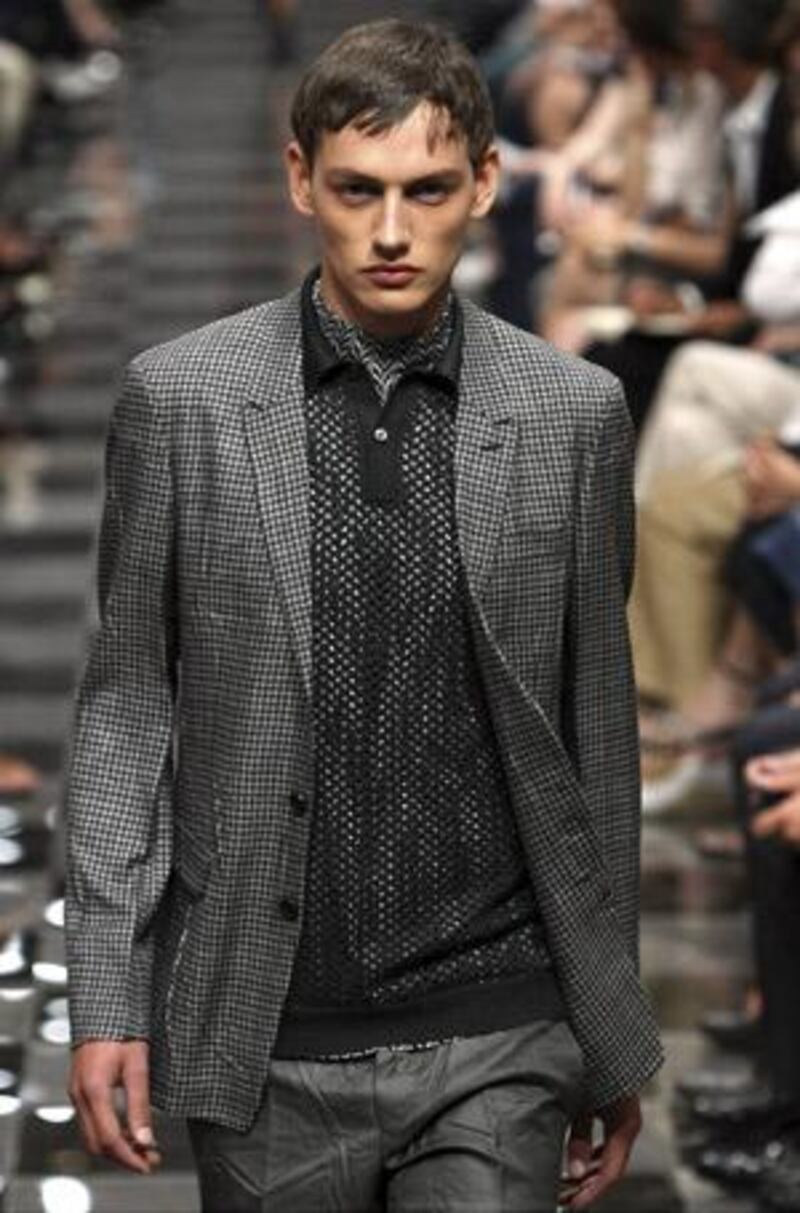My summer holiday took in two locations that couldn't have been more different. First stop, St Tropez or "St Trop" as you must call it. Although I didn't run into Kate Moss or Lily Allen at Le Cinquante-Cinq - the private beach club where anyone who's anyone spends the day working very hard on their tan - I did see fabulous fashions. Not on tourists (who wore grungy denim cut-offs 24/7) but natives.
French women still wear almost entirely white with simple gold jewellery and sandales Tropeziennes, flat sandals bought locally from K Jacques or Atelier Rondini, where shoes are made by hand in the back workroom. The effect being that they look like filmstars. Of course some are. When I was here the French daily, Le Figaro, bragged that St Trop still had "the greatest number of famous faces per square metre." It certainly felt like it when Jack Nicholson and Eva Longoria buzzed by on a jet-ski close to us on Nikki beach and no one batted an eyelid.
This year the jet set and fashion pack seemed to rediscover the picture postcard port of the South of France en masse. With good reason. Unlike Ibiza, you can never quite dress up enough in St Trop. Full make-up, flowing kaftans and sequined one pieces on the beach for instance are quite the norm. Funnily enough, though, it wasn't the South of France that provided me with an insightful style nugget. It was my second stop-off, rural Northumberland, somewhere I had written off as "tumbleweed territory" as far as fashion was concerned.
Who could have thought here, sandwiched between the borders of England and Scotland, amongst newly harvested fields of golden wheat and sleepy villages where men folk still wear cloth caps (during a heatwave), I would find the muse-of-the-moment. At least in fashionable menswear terms. Farmers - yes, farmers - were the unlikely inspiration behind the men's designer catwalks of Paris and Florence earlier this year. Not just any but plucky, well-bred, well-off toffs from the North East of Britain who learn how to run daddy's estate at Cirencester Agricultural College and occasionally visit his tailor (Norton and Sons) in Savile Row.
Although there weren't any celebrities hanging out in the market town of Alnwick (Milla Jovovich and her Newcastle-born new husband, the director Paul Anderson, who often pop into town were too busy getting married in Beverley Hills), there were plenty of stylish farmers. Occasionally, I would catch sight of one driving along a country lane in a mud-spattered tractor or, equally, the shiny new 2010 supercharged Range Rover. (Despite the fact this gas-guzzling boy toy only came out in July and is recession-defyingly pricey, it was as common a sight as sheep or cows.)
Northumberland was the place to study the latest fashion-forward menswear trend up close and in its natural habitat, a few miles from the River Tweed (as in, you know, "tweed"). For anyone not familiar with the dress code for the posh county farmer, they wear big workmen's boots with weather-beaten fitted cords, worn-in jodhpurs or sun-bleached jeans. On top goes a hairy Tattersal shirt, often open with rolled up sleeves over a t-shirt that could have once been white, and, the piece de la resistance, a beautifully tailored moss green or pale brown jacket, handed down a couple of generations, made of the finest Worsted tweed.
Clothes that were once essential are taking on a new nostalgic appeal, particularly to fashion designers from Dolce & Gabbana and Prada to Burberry. It's also basically a new way to grunge up suiting and tailoring, without veering into sportswear, which has been done to death. New season's menswear is all about vintage cotton twill rain coating, brogues, breeks, the colour green, checked lumberjack shirts and wardrobe staples, like a weatherproof jacket originally designed for a pursuit other than posing, with details like pockets or belt loops to hold a brace of pheasants or air rifle.
Farmer fashion is being called the "new grunge" and is evident in high-street ranges such as Gap, starting with countrified brogue boots and finishing with a rather dashing tailored jacket or quilted "husky" jacket, pioneered by Barbour but more recently worn by City dwellers from Hoxton to the Hamptons. I returned to the city, post-holiday, with deep regret this season in womenswear, alas the farmer's wife is not equally a current fashionable look. I did however purchase a grungy green waterproof parka by Burberry, (an authentic outdoor bit of country gear but reminiscent of early Oasis I rather thought), which I shall be wearing to London Fashion Week next week, along with my St Tropez tan. Result.





